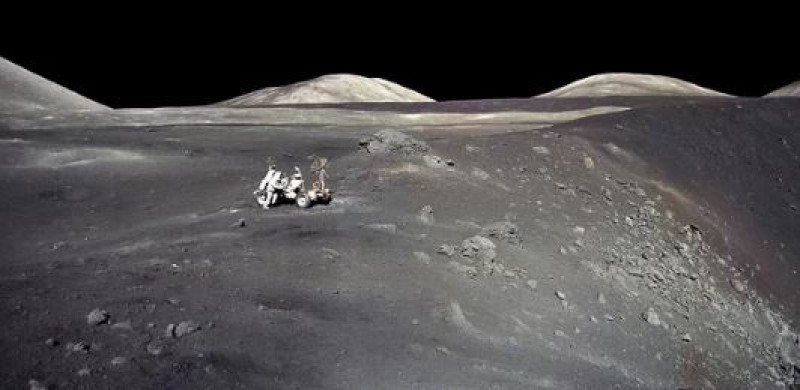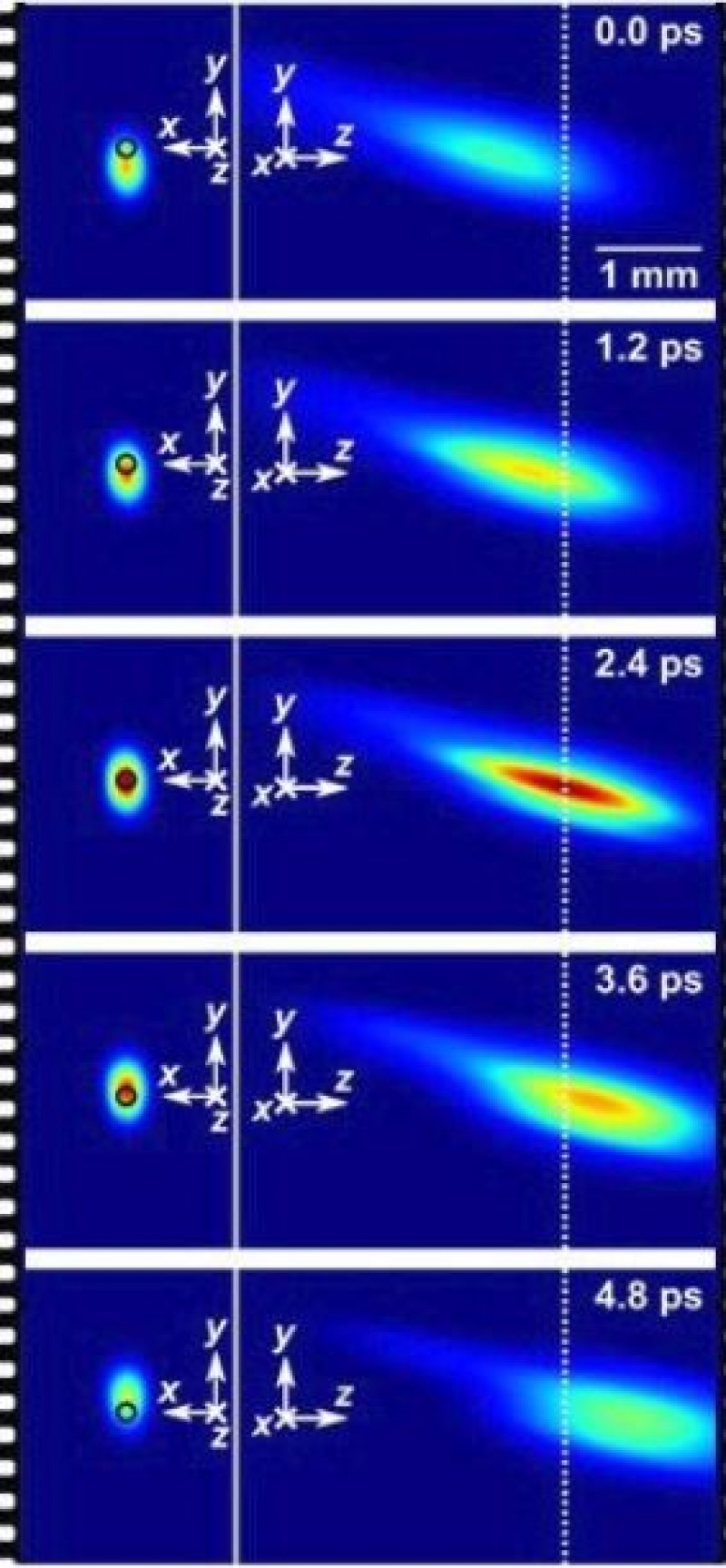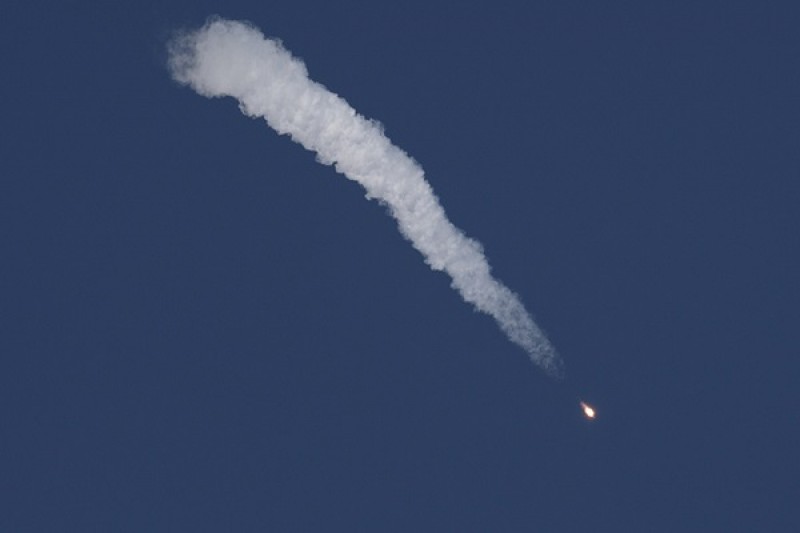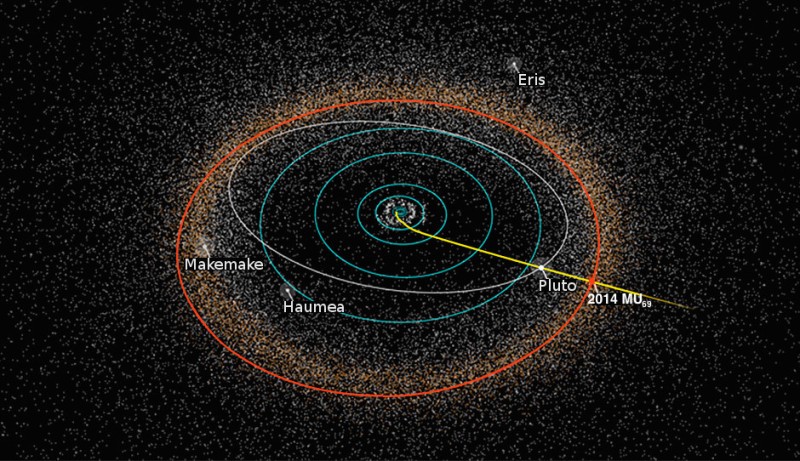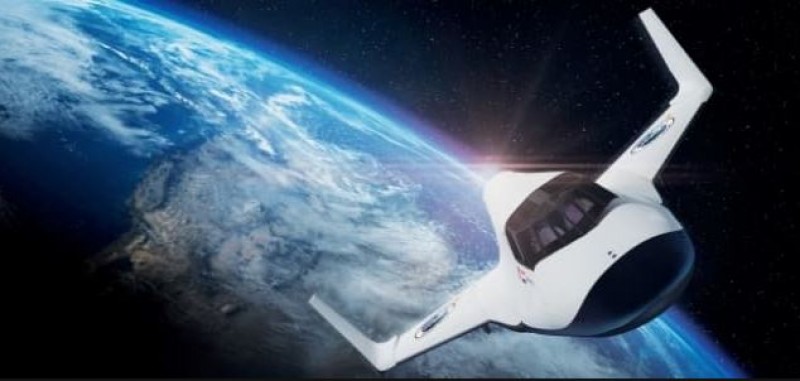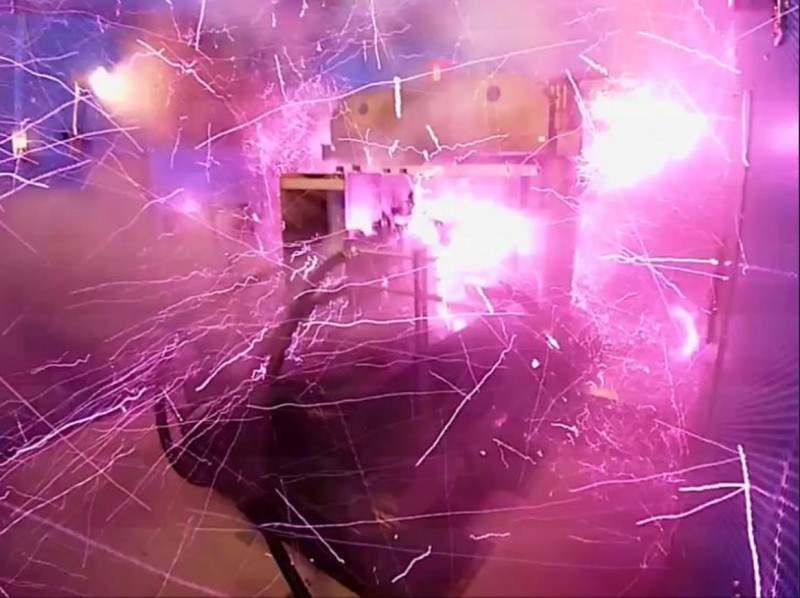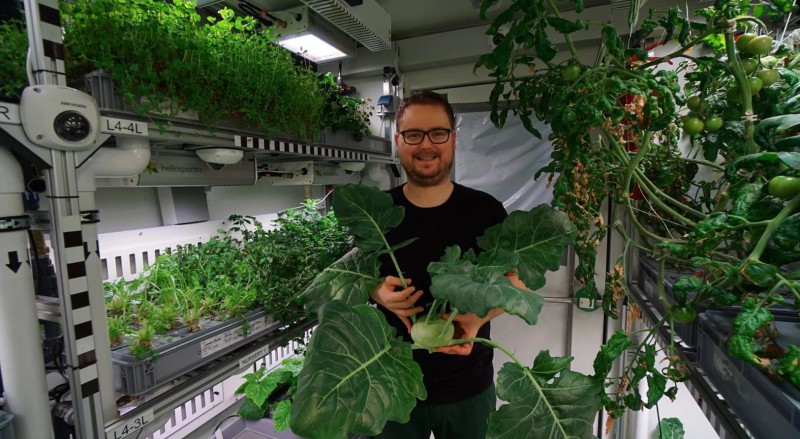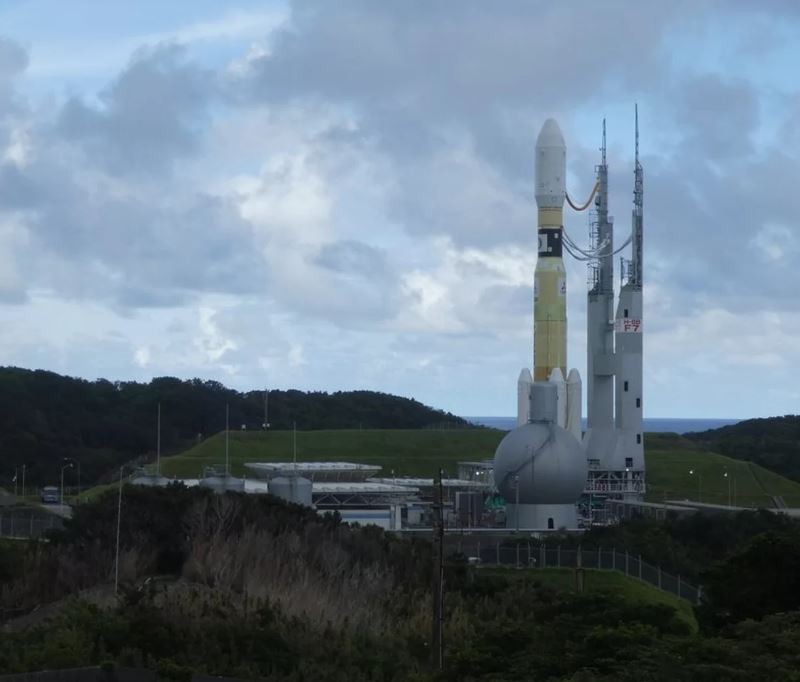News
Moon Science! NASA Needs Experiment Ideas for Commercial Lunar Landers
Tuesday, October 23rd 2018 10:54 PM
NASA has opened a submission period for commercial moon-lander proposals, noting that selected technology might fly as soon as next year.
The call is one of the agency's early steps in its plan to return humans to the moon's surface in the 2020s. That timeline was chosen in part because of the plan NASA has to recruit commercial partnerships to lessen the burden on the agency and its budget.
"The strategy is that these early missions will help us prepare for more complex future missions such as searching for useable resources, building up a seismic network to understand the moon's internal structure, and studying the lunar mineralogy and chemistry to understand the moon's origins," Steve Clarke, deputy associate administrator for exploration at NASA, said in a statement.
NASA is keeping an open mind as to what precisely those commercial landers will look like, although the agency does want projects that have a scientific or technological focus. "We are...
Read More
Read More
10 Trillion Frame-per-Second Camera Captures Photon Pulses in Mid-Air
Monday, October 22nd 2018 10:34 PM
10 Trillion Frame-per-Second Camera Captures Photon Pulses in Mid-Air
What happens when a new technology is so advanced and precise that it operates on a scale beyond our ability to accurately characterize and measure? That happens when lasers used to produce ultrashort pulses in the femtosecond range (10 ^-15 seconds) are far too short to visualize. Although some measurements are possible, nothing beats a clear image according to Professor and ultrafast imaging specialist Jinyang Liang of the INRS (Institut National de la Recherche Scientifique), a part of the Universite du Quebec network in Canada. He and his colleagues, led by Caltech’s Lihong Wang, have developed T-CUP, the world’s fastest camera, capable of capturing ten trillion (10 ^13) frames per second. This new camera literally captures photon pulses in mid-air and makes it possible to freeze time and see phenomena in extremely slow motion.
In recent years, the junction between innovations in non-lin...
Read More
Read More
Kiss the Sky Tonight -- Month of October 2018
Monday, October 15th 2018 09:56 PM
Welcome to the night sky report for October 2018 -- Your guide to the constellations, deep sky objects, planets, and celestial events that are observable during the month. Look for Pegasus, the great winged horse of Greek mythology, prancing across the autumn night sky. Binoculars and small telescopes will reveal the glowing nucleus and spiral arms of our neighbor, the Andromeda Galaxy. Don’t miss the Orionid meteor shower, which peaks on the night of October 21 to 22.The night sky is truly a celestial showcase. Get outside and explore its wonders from your own backyard.
Planets begin to depart the evening sky as chilly October winds blow.
Mars and Saturn still dominate the southern sky, Mars in Capricornus and Saturn in Sagittarius. A modest telescope reveals the rings orbiting Saturn.
The waxing moon travels between the two in the middle of the month.
The orange disk of Mars decreases in size and its features fade from view as its distance from Earth increases over the cour...
Read More
Read More
Soyuz rocket failure: What went wrong, and what happens next
Saturday, October 13th 2018 07:32 PM
Launch Failure
Two astronauts made an emergency landing in Kazakhstan Thursday after a Russian Soyuz rocket failed while launching them to the International Space Station. According to NASA officials, the rocket failed in its ascent soon after liftoff and the capsule with the astronauts inside — one Russian and one American — was sent careening back to Earth.A search-and-rescue team reached the site quickly to get to the Soyuz MS-10 crew, leaving at 6:10 A.M. EDT, according to NASA spokesperson Brandi Dean’s commentary on live television. Both crew members are reportedly safe and in good condition, and have already been reunited with their families.
The Soyuz FG rocket used in the launch malfunctioned just two minutes after liftoff in Kazakhstan. The failure forced Russian cosmonaut Aleksey Ovchinin and NASA astronaut Nick Hague to execute an emergency abort and return the few hundred mile...
Read More
Read More
NASA Celebrates the 50th Anniversary of Apollo 7
Thursday, October 11th 2018 11:59 PM
On Oct. 11, 1968, NASA launched its first crewed Apollo mission, which paved the way for the moon landing less than a year later.
The Apollo 7 crew was commanded by Walter Schirra, with Command Module Pilot Donn Eisele, and Lunar Module Pilot Walter Cunningham. The mission consisted of an 11-day Earth-orbital test flight to test the Apollo command and service module. It was also the first time a crew flew on the Saturn IB rocket.
Although Apollo 7 was a complete technical success, it was born out of a tragedy. After the fatal fire that took the lives of the Apollo 1 crew—Gus Grissom, Roger Chaffee, and Ed White—the Apollo 7 crew took over the mission.
Apollo 1 was supposed to be the first crewed Apollo mission. During a launch rehearsal test at Cape Kennedy, an electrical fire broke out in the cabin. Because the cabin atmosphere was pure oxygen, the fire spread incredibly quickly. The fire also created intense pressure inside...
Read More
Read More
New Horizons explores the Kuiper Belt
Monday, October 1st 2018 09:42 PM
New Horizons is NASA’s Pluto and Kuiper Belt exploration spacecraft. After a four-year-long development, the sophisticated probe was launched in January 2006. In 2015, New Horizons conducted the first close-up exploration of Pluto and its five moons, revolutionizing our knowledge of that system. As principal investigator of the mission, S. Alan Stren chronicled the amazing results from that flyby in Astronomy in November 2015, May 2016, and September 2017.
But the New Horizons team designed and built the spacecraft to do more than just explore the Pluto system. The spacecraft is forging ahead, conducting a new, NASA-approved and funded, five-year extended mission. The Kuiper Extended Mission (KEM) will explore the vast Kuiper Belt and numerous bodies in it — most notably, the first-ever flyby and close-up study of an ancient Kuiper Belt object (KBO).
KEM began in late 2016 and will stretch into mid-2021. Its centerpiece is the flyby of the...
Read More
Read More
A Decade of Commercial Space Travel—What’s Next?
Saturday, September 29th 2018 12:04 AM
In many industries, a decade is barely enough time to cause dramatic change unless something disruptive comes along—a new technology, business model, or service design. The space industry has recently been enjoying all three.
But 10 years ago, none of those innovations were guaranteed. In fact, on Sept. 28, 2008, an entire company watched and hoped as their flagship product attempted a final launch after three failures. With cash running low, this was the last shot. Over 21,000 kilograms of kerosene and liquid oxygen ignited and powered two booster stages off the launchpad.
This first official picture of the Soviet satellite Sputnik I was issued in Moscow Oct. 9, 1957. The satellite measured 1 foot, 11 inches and weighed 184 pounds. The Space Age began as the Soviet Union launched Sputnik, the first man-made satellite, into orbit, on Oct. 4, 1957.AP Photo/TASS
When that Falcon 1 rocket successfully reached orbit and the company secured a subsequent contract...
Read More
Read More
This Super-Strong Magnet Literally Blew the Doors Off a Tokyo Laboratory
Thursday, September 27th 2018 09:01 PM
There's a magnet in a secure room in central Tokyo. It's an electromagnet, the kind that generates a magnetic field when electrical current flows through it. The last time the scientists who operate it switched it on, it blew open the heavy doors designed to keep it contained. Already, it has created one of the most intense magnetic fields ever generated on Earth. And it keeps getting more powerful.
The magnetic field, which recently reached a strength of 1,200 teslas — a unit of magnetic intensity — was described in a paper published Sept. 17 in the journal Review of Scientific Instruments.
Twelve hundred teslas is an enormous measurement. The most powerful magnet most people have any chance of encountering in their lifetime is inside an MRI machine — and the most advanced, powerful, sometimes dangerous MRIs in the world clock in at just 3 teslas. In 2004, Popular Mechanics magazine described a machine billed as "the world's most power...
Read More
Read More
Antarctica Greenhouse Produces Cucumbers, Tomatoes and More in Mars-Like Test
Monday, September 24th 2018 11:56 PM
Fresh vegetables on Mars, anyone?
An Antarctic greenhouse known as EDEN ISS not only survived the polar night but emerged from it with a harvest for local researchers, thus providing hope that future Mars colonists could also enjoy fresh food during their time on the Red Planet, German Aerospace Center (DLR) officials said in a statement.
Regularly withstanding temperatures below minus 40 degrees Fahrenheit (minus 40 degrees Celsius), the greenhouse provided herbs, lettuce and other vegetables to 10 people who were riding out the winter in the remote station, called the Alfred Wegener Institute's Neumayer Station III. It's the first time the greenhouse operated through the winter.
) of cucumbers, 64 lbs. (29 kg) of tomatoes, 26 lbs. (12 kg) of kohlrabi, 20 lbs. (9 kg) of herbs and 11 lbs. (5 kg) of radishes.
All of the crops were produced in a cultivated area measuring just 140 square feet (13 square meters). However, the peppers and stra...
Read More
Read More
Japan Delays Launch of New Space Station Cargo Ship Again
Saturday, September 15th 2018 12:32 AM
The Japan Aerospace Exploration Agency (JAXA) unexpectedly delayed a vital cargo launch to the International Space Station just an hour before the rocket was scheduled to lift off.
The agency has not yet provided a new launch date or an explanation for the delay. The mission had already been postponed from a liftoff originally scheduled for Sept. 10 (Sept. 11 local time) by a typhoon near the launch site at Tanegashima Space Center in southern Japan. After the weather delays, the agency calculated a range of launch windows lasting through the end of October.
The vehicle, an H-II Transfer Vehicle called HTV-7, is carrying critical supplies for the six astronauts currently living aboard the orbiting laboratory. The cargo includes six new batteries, which astronauts will install on the exterior of the space station during spacewalks currently scheduled for later this month. The spacecraft is also carrying a host of experiment supplies for the scientifi...
Read More
Read More
